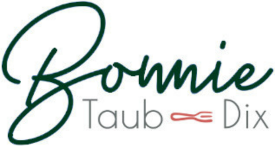If you’re having trouble getting enough Vitamin D in your diet, here are 6 great options to add to your daily eats.
You’ve probably heard vitamin D affectionately called the “sunshine vitamin,” and that’s because our bodies produce the nutrient—which is crucial for bone and hair health, immune function, and insulin function, and may boost your athletic performance, mood, ability to lose weight, and more—when our skin is exposed to the sun’s UVB rays.
But while there’s plenty of sunshine to go around in the summer, relying on the sun as your primary source of vitamin D isn’t realistic all year round. UVB rays aren’t strong enough to trigger vitamin D production in the winter, plus sunscreen interferes with vitamin D production (SPF 15 blocks up to 93 percent of UVB rays), our ability to convert sunlight into vitamin D decreases with age, and most of us spend our days indoors.
The result: Research suggests about 40 percent of the U.S. population is deficient in the nutrient, and deficiency can increase your likelihood of developing osteoporosis, contribute to hair loss, affect sleep quality, and increase feelings of sadness and depression.
While the government recommends adults get 600 IUs of D per day, other organizations and experts (myself included) recommend aiming higher—anywhere from 800 to 5,000 IUs a day, depending on who you ask.
Adding vitamin D to your diet takes some extra effort because it’s not found in too many foods. You do have a few options, though. Here are the D-licious foods I recommend eating more of.

1. Fatty Fish
Fatty fish, like tuna, salmon, swordfish and trout, is the best food source of vitamin D out there. Three ounces of salmon packs 447 IUs, while three ounces of swordfish packs 566 and the same amount of tuna offers 154. (FYI: Studies suggest that wild salmon contains even more vitamin D than farm-raised fish.) In addition to vitamin D, fatty fish also provides a dose of omega-3 fatty acids, which are good for your brain and heart health.
In the summer, grill up some fish on the BBQ for a light, tasty, D-packed meal. (My tangy grilled salmon is a guaranteed crowd pleaser, or try my baked Mediterranean salmon over a bed of roasted veggies.
2. Sardines
Not only are these salty fish kind on your wallet, but they can help you boost your vitamin D intake. Just two sardines contain about 40 IUs! They’re also an excellent source of selenium, vitamin B12, calcium, and omega-3s. And since canned sardines have a long shelf life, they are easy to stock up on, so you can pack in more vitamin D in a pinch.
Chop some up with onions, fresh herbs, and a squeeze of horseradish sauce, and spread it atop toast or over a fresh salad to make for an easy lunch or light dinner.
3. Eggs
Eggs play a starring role in the Paleo, Whole30, and ketogenic diets—and for good reason! Not only do they provide vitamin A (which is good for your immune system), choline (which supports brain health), carotenoids (which support eye health), omega-3s, and protein, but they also contain about 41 IUs of vitamin D a pop. That’s a lot of nutrition for about 70 calories!
Whipped up as deviled eggs, folded into an omelet, or baked as a frittata, eggs are a versatile and valuable staple in any diet. Just make sure you eat the yolk—that’s where all of the vitamin D is.
4. Mushrooms
Like our skin, mushrooms can use sunlight to produce vitamin D, making them the only source of the nutrient you’ll find in the produce aisle. Recently, many mushroom growers have begun to treat their ‘shrooms with ultraviolet light to boost their vitamin D content. While three and a half ounces of fresh shiitake mushrooms provides about 100 IUs, the same amount of sun-dried shiitake mushrooms provides a whopping 1,600 IUs.
In addition to their meaty flavor and impressive vitamin D content, mushrooms are also good source of fiber and nutrients that support the immune system, like copper, potassium, magnesium, zinc, and B vitamins (including folate). Plus, they pack about 2.2 grams of protein per cup.
I like tossing mushrooms into salads, adding them to omelets, putting them on burgers, or sautéing them up with balsamic vinegar.
5. Beef Or Calf Liver
Whether you love them or feel squeamish just thinking about them, there’s no denying that organ meats are nutrient powerhouses. Liver, in particular, is packed with protein, iron, vitamin B12, vitamin A, and riboflavin—and offers 42 IUs of vitamin D in every three-ounce serving.
If smearing chopped liver on celery or crackers doesn’t appeal to you, try sautéing it and serving it with caramelized onions.
6. Fortified Foods
To help us meet our vitamin D needs, many foods and drinks—such as milks (both dairy and non-dairy), orange juices, cereals, and breads—are fortified with the vitamin. One cup of fortified milk, for example, offers about 400 IUs of vitamin D. Meanwhile, many almond milks, breakfast cereals, and orange juices pack somewhere around 150 IUs. Although these fortified foods shouldn’t replace natural sources of vitamin D, they can significantly boost your intake.
When Supplements Can Help
According to the National Institutes of Health, older adults, people who spend little time outside or live far from the equator, people with darker skin, and people with digestive issues are at the greatest risk for vitamin D insufficiency. Luckily, finding out whether you’re low in D is as simple your doctor doing bloodwork.
From there, your doctor can recommend a supplement (typically vitamin D3) at a dose based on your needs.
This article was originally posted on What’s Good by V.


